While working on a personal project on Spring Boot, I have to develop a web service that accepts a file and some metadata, and I have decided to test with a Postman client.
Versions I am using:
- Postman version: Postman for Mac Version 7.8.0 OS X 18.7.0 / x64
- Java version: 1.8.0_212
- Spring boot version: 2.1.1.RELEASE
As metadata will potentially be quite structured, I have decided to use the multipart/form-data content type, consisting in two parts:
- a "file" part containing the file
- a "body" part containing the json with the metadata
I've configured the call in Postman like this

Now, Spring boot configuration. First of all, I've added the following lines to application.properties:
## MULTIPART (MultipartProperties)
# Enable multipart uploads
spring.servlet.multipart.enabled=true
# Threshold after which files are written to disk.
spring.servlet.multipart.file-size-threshold=2KB
# Max file size.
spring.servlet.multipart.max-file-size=20MB
# Max Request Size
spring.servlet.multipart.max-request-size=25MB
I've then created my controller with the endpoint
@PostMapping(Paths.Registrations.BASE)
@ResponseBody
public PostRegistrationResponseDto postRegistration(@RequestParam("file") MultipartFile file, @RequestParam("body") PostRegistrationRequestDto req) {
PostRegistrationResponseDto resp = new PostRegistrationResponseDto();
resp.setId(new Random().nextLong());
resp.setFileName(req.getFileName());
resp.setRegistrationTime(LocalDateTime.now());
return resp;
}
Unfortunately, the call does not even arrive to Spring: I receive a HTTP 500 error with this body
<!doctype html>
<html lang="en">
<head>
<title>HTTP Status 500 – Internal Server Error</title>
<style type="text/css">
...
</style>
</head>
<body>
<h1>HTTP Status 500 – Internal Server Error</h1>
</body>
</html>
In my server log I get no exception, but when I set the debugger to block on exceptions I saw that tomcat launches an EOF exception with this stack trace
java.io.EOFException
at org.apache.tomcat.util.net.NioEndpoint$NioSocketWrapper.fillReadBuffer(NioEndpoint.java:1208)
at org.apache.tomcat.util.net.NioEndpoint$NioSocketWrapper.read(NioEndpoint.java:1142)
at org.apache.coyote.http11.Http11InputBuffer.fill(Http11InputBuffer.java:729)
at org.apache.coyote.http11.Http11InputBuffer.parseRequestLine(Http11InputBuffer.java:352)
at org.apache.coyote.http11.Http11Processor.service(Http11Processor.java:294)
at org.apache.coyote.AbstractProcessorLight.process(AbstractProcessorLight.java:66)
at org.apache.coyote.AbstractProtocol$ConnectionHandler.process(AbstractProtocol.java:791)
at org.apache.tomcat.util.net.NioEndpoint$SocketProcessor.doRun(NioEndpoint.java:1417)
at org.apache.tomcat.util.net.SocketProcessorBase.run(SocketProcessorBase.java:49)
at java.util.concurrent.ThreadPoolExecutor.runWorker(ThreadPoolExecutor.java:1149)
at java.util.concurrent.ThreadPoolExecutor$Worker.run(ThreadPoolExecutor.java:624)
at org.apache.tomcat.util.threads.TaskThread$WrappingRunnable.run(TaskThread.java:61)
at java.lang.Thread.run(Thread.java:748)
I admit I do not even know where to start from... can someone give me some hints of what I'm doing wrong?
Thanks :)